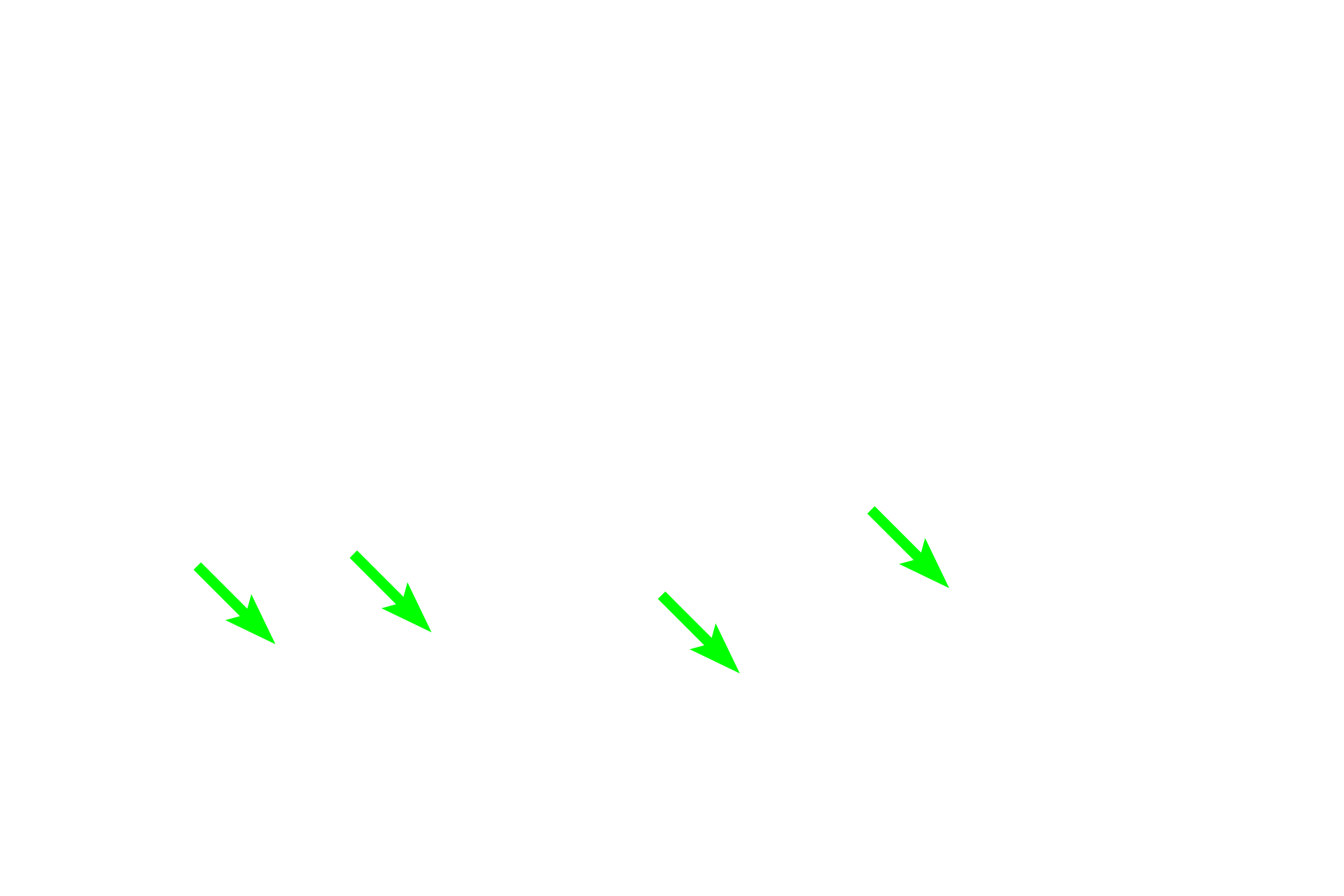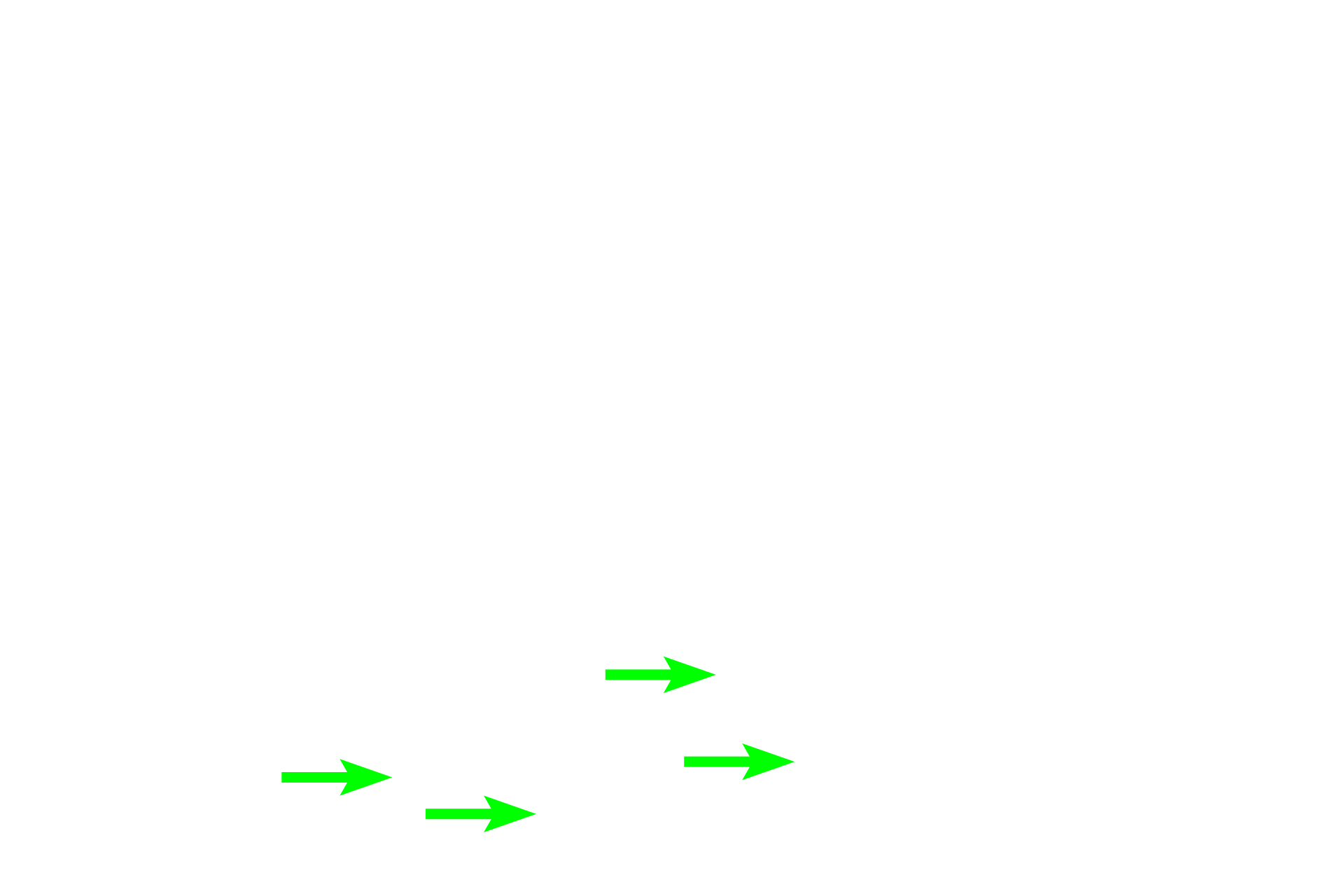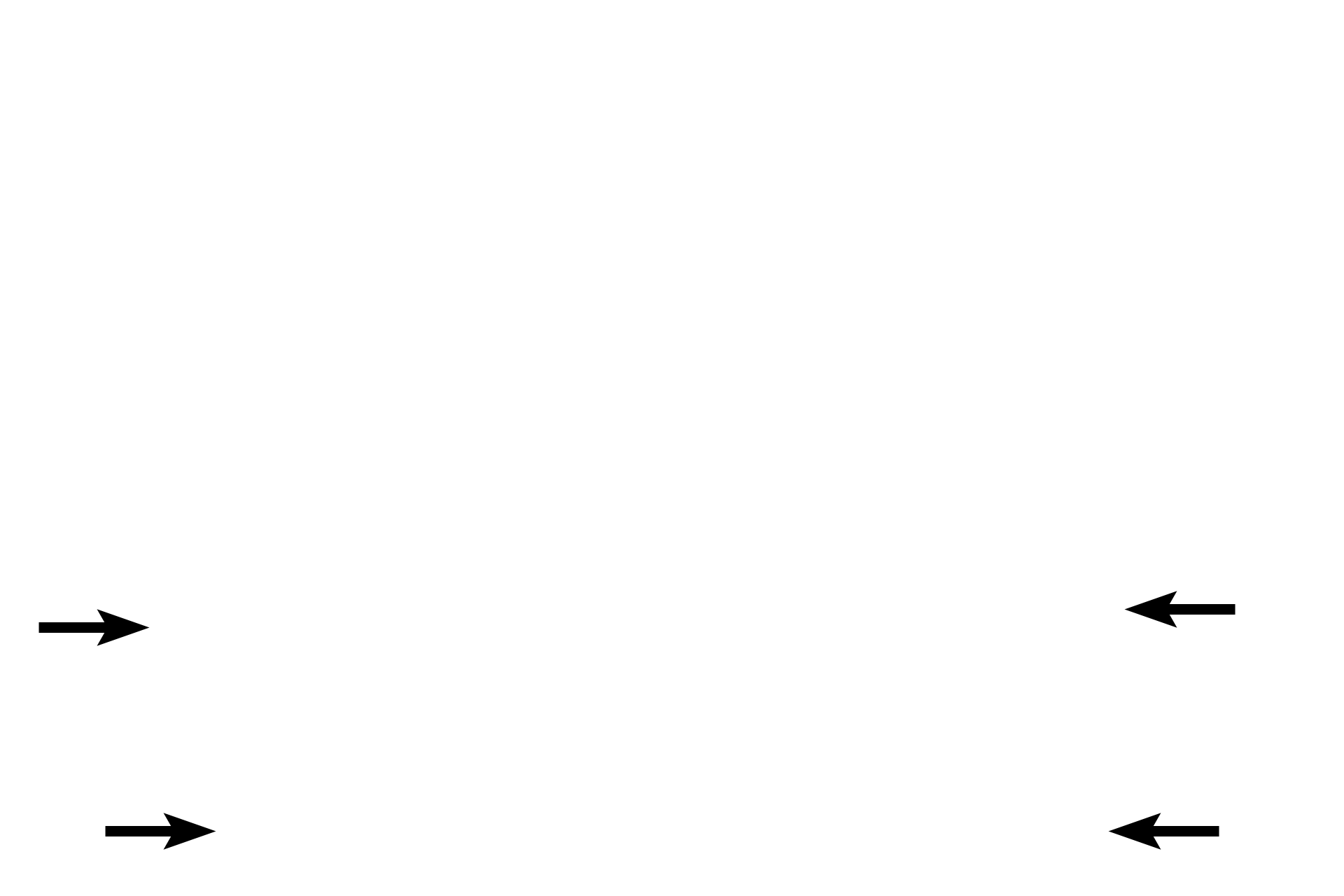
Endochondral ossification
This longitudinal section of a developing long bone shows an epiphyseal plate and its surrounding tissues. The epiphyseal plate, is composed of a series of zones reflecting regressive stages of the chondrocytes. Endochondral ossification in epiphyseal plates results in growth in length of long bones. 40x

Hyaline cartilage >
Typical hyaline cartilage fills the epiphysis at the upper portion of the image.

Epiphyseal plate >
The epiphyseal plate is composed of a series of zones reflecting regressive stages of the chondrocytes. These cells first proliferate, then mature and hypertrophy, which results in the calcification of the cartilage matrix and death of the cartilage cells. Spicules of calcified cartilage, the only remnant of this process, serve as a framework on which bone is deposited.

Cartilage spicules >
Blue/purple spicules of calcified cartilage project toward the marrow space and serve as a scaffolding on which bone can be deposited. These spicules retain the blue/purple staining characteristics of hyaline cartilage.

Bone >
Bony matrix is deposited on the calcified cartilage spicules by the endosteum lining the interior of the developing bone. Because it stains pink/red, bone is easy to differentiate from the blue, calcified cartilage spicules on which it is deposited.

Periosteal collar >
The periosteal collar is a cylinder of bone, initially formed by intramembranous ossification by the periosteum. Addition of bone to the ends of the cylinder by endochondral ossification results in growth of the bone in length.